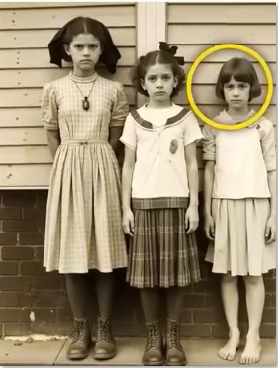
In 1912, three young girls posed outside the Porte Mill in Gastonia, North Carolina, unaware their photograph would outlive them all.
Among them was nine-year-old Pearl Turner, who had already spent three years working the looms. Mill life was brutal—long hours,
dangerous machines, and cotton dust that often led to fatal lung diseases. Few child workers survived to adulthood, yet Pearl did.
Over a century later, in 2025, researchers studying Thomas Himmel’s historic photo collection made an astonishing discovery.
Enhanced imaging of the photo revealed subtle facial markers linked to genetic resistance against respiratory illness. Professor Sonia Abernathy’s team
confirmed that Pearl’s features suggested a rare resilience that may have protected her from the ailments that killed thousands of mill children.
Pearl lived until 1964, her life quietly defying the odds stacked against her generation. What was once a simple
photograph of exploited child laborers has become both a historical artifact and a scientific revelation.
Pearl Turner’s image now stands as a symbol of endurance—proof that even in the harshest circumstances, hidden strength can emerge.
Her story bridges history and medicine, reminding us that behind every faded photograph lies not just hardship, but the enduring spirit of survival.